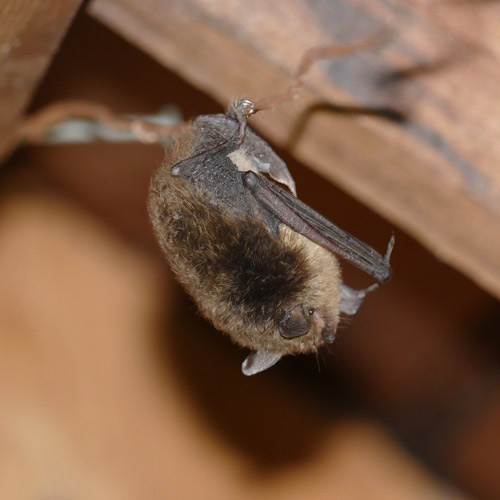Have you noticed more bats around your house or property? You are not alone! Midsummer is the time when landowners typically notice more bat activity, may have bats flying into their house, and occasionally find a bat on the ground or roosting in unusual locations. These surprise visitors are usually the young pups. “In July and August, pups are learning to fly, and their early efforts may land them in locations where they are more likely to come in contact with humans“, says Mandy Kellner, biologist and coordinator with the BC Community Bat Program.
If you find a bat, alive or dead, never touch it with your bare hands. Bats in BC have very low levels of rabies infection, but any risk of transmission should not be treated lightly. Contact a doctor or veterinarian if a person or pet could have come into direct contact
(bitten, scratched etc.) with a bat.
Landowners can visit the BC Community Bat Program’s website (www.bcbats.ca) for information on safely moving a bat if necessary and to report bat sightings. The Program also has a 1-800 number (1-855-9BC-BATS) with regional coordinators across the province able to offer advice. The Program is also currently seeking reports of mortalities at bat colonies in houses, barns, or bat houses. The BC Community Bat Program and their support with batty matters is funded by the Habitat Conservation Trust Foundation, the Forest Enhancement Society of BC, and the Government of BC. Female bats gather in maternity colonies in early summer, where they will remain until the pups are ready to fly. Some species of bats have adapted to live in human structures, and colonies may be found under roofs or siding, or in attics, barns, or other buildings. Having bats is viewed as a benefit by some landowners, who appreciate the insect control. Others may prefer to exclude the bats. Under the BC Wildlife Act, it is illegal to exterminate or harm bats, and exclusion can only be done in the fall and winter after it is determined that the bats are no longer in the building. Again, the BC Community Bat Program can offer advice and support. To find out more, download the “Managing Bats in Buildings” booklet, or contact your local Community Bat Program by calling 1-855-9BC-BATS.
Thanks to the BC Community Bat Program for providing this update.







